I stumbled on the idea of a spiderweb cheesecake after a late-night craving for something tangy and textured. The web pattern isn’t just for looks; it’s a playful way to swirl lemon curd or fruit preserves into the creamy surface. It’s a bit messy, a bit elegant, and totally satisfying to make.
This recipe isn’t about perfection but about the joy of creating something that looks intricate but is surprisingly straightforward. It’s perfect for when you want to impress but also want to feel like a kid again, playing with flavors and design.
Why I keep returning to this recipe
The web pattern is endlessly satisfying, each swirl a small act of creation. It’s a reminder that beauty can be simple, even imperfect. Plus, the tangy lemon cuts through the richness, making every bite lively and fresh, especially in the warmer months.”}}}}
Breaking down the ingredients for your web of flavor
- Graham cracker crumbs: Provides the crunchy base, a touch of sweetness, and a nutty aroma. Swap for digestive biscuits if needed.
- Cream cheese: The creamy backbone of the cheesecake. Full-fat is best for richness, but Neufchâtel works in a pinch.
- Lemon juice and zest: Adds bright, zesty tang that cuts through the richness. Swap for lime for a different zing.
- Sugar: Sweetens and balances tartness. Honey or maple syrup can replace part of it for a deeper flavor.
- Eggs: Bind and set the filling. Use fresh eggs, but aquafaba can work for a vegan version.
- Butter: Binds the crust. Unsalted is recommended to control saltiness.
- Lemon curd (for swirl): Oozy, citrusy, and slightly smoky when made with torching—an essential web element.
Tools of the trade for a web-worthy cheesecake
- Springform pan: To easily release the cheesecake without damage.
- Mixing bowls: For blending crust and filling ingredients.
- Electric mixer: To beat the cream cheese and sugar smoothly.
- Rubber spatula: For folding ingredients and swirling patterns.
- Cooling rack: To cool the crust and cheesecake evenly.
Step-by-step: Crafting the Spiderweb Cheesecake
Step 1: Preheat your oven to 160°C (320°F).
Step 2: Line a 23cm (9-inch) springform pan with parchment, grease the sides.
Step 3: In a small bowl, mix crushed graham crackers with melted butter and a pinch of salt.
Step 4: Press this crumb mixture evenly into the bottom of the pan, then bake for 10 minutes. Let cool.
Step 5: In a mixing bowl, beat softened cream cheese with sugar until smooth, about 3 minutes.
Step 6: Add eggs one at a time, then mix in lemon juice and zest for brightness.
Step 7: Pour the filling over the cooled crust. Bake for 50-55 minutes until the edges are set but the center still jiggles slightly.
Step 8: Turn off the oven, crack the door open, and let the cheesecake cool inside for an hour.
Step 9: Refrigerate at least 4 hours or overnight before decorating.
Cooking checkpoints and tips for perfection
- The crust should be firm and slightly toasted, not soggy or pale.
- The filling’s edges must be set, but the center should still jiggle slightly when shaken.
- The top should develop a gentle crackle, indicating proper baking and cooling.
- Use a knife around the edges before removing the springform for a clean release.
Avoid common pitfalls: mistakes and how to fix them
- Using cold cream cheese straight from the fridge.? Ensure the cream cheese is softened to avoid lumps.
- Overbaking the cheesecake.? Bake until just set to prevent cracks.
- Cooling the cheesecake too quickly or in a cold draft.? Cool gradually to prevent cracks.
- Uncertain if the cheesecake is fully baked.? Use a clean toothpick to test for doneness.
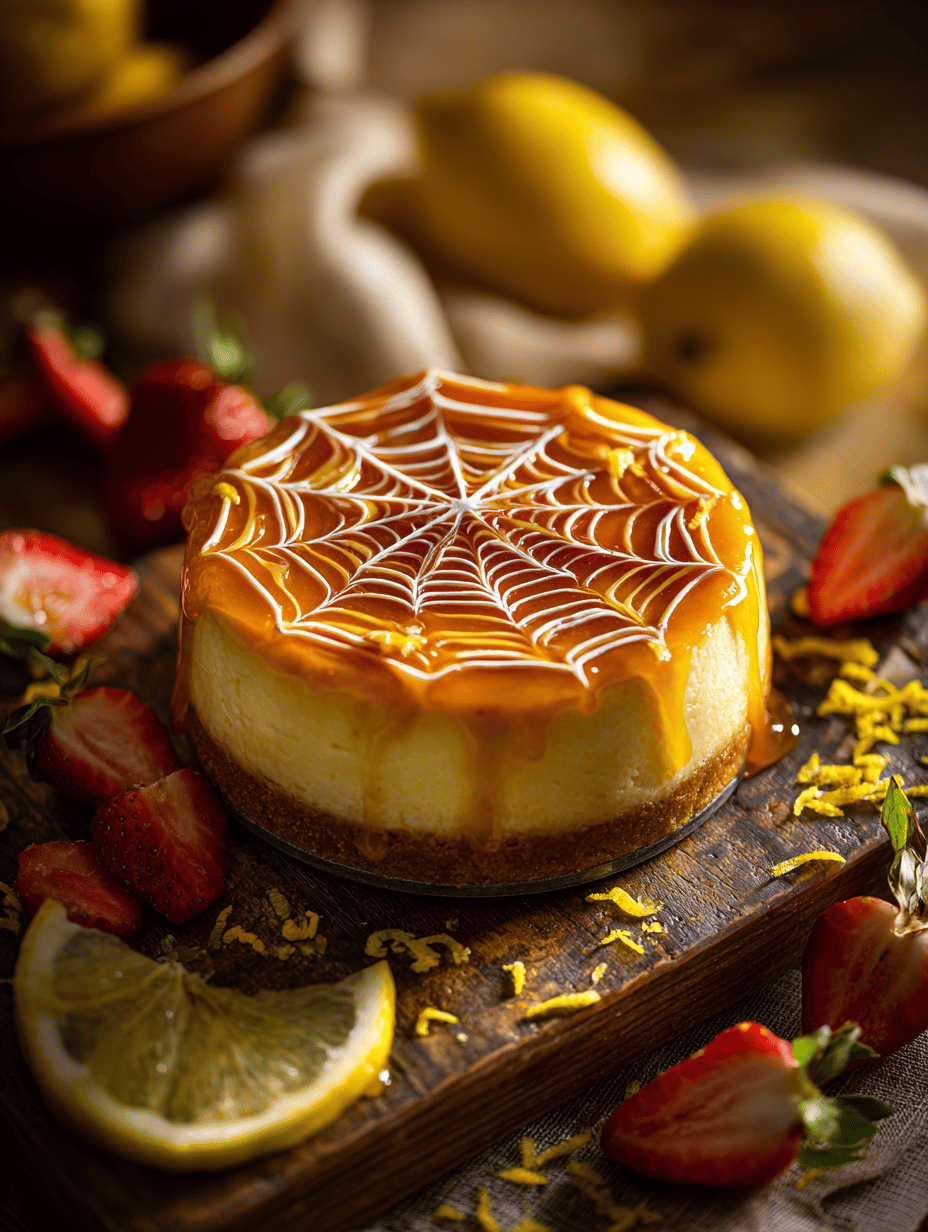
Spiderweb Lemon Cheesecake
Ingredients
Equipment
Method
- Preheat your oven to 160°C (320°F). Prepare a 23cm (9-inch) springform pan by lining the bottom with parchment and greasing the sides with butter.
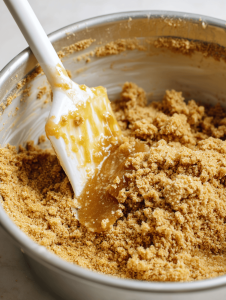
- In a small bowl, combine graham cracker crumbs with melted butter until the mixture resembles wet sand. Press this evenly into the bottom of the prepared pan, creating a firm crust. Bake for 10 minutes, then set aside to cool.
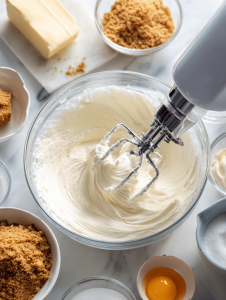
- Using an electric mixer, beat softened cream cheese and sugar on medium speed until smooth and creamy, about 3 minutes. This helps develop a silky filling.
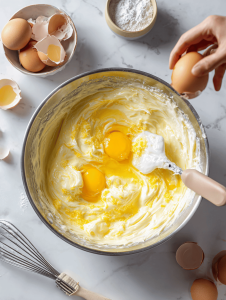
- Add eggs one at a time, beating well after each addition. This ensures a smooth, lump-free batter.
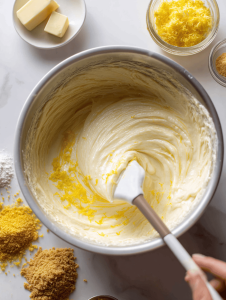
- Stir in lemon juice and zest until fully combined. The mixture will be slightly tangy and fragrant.
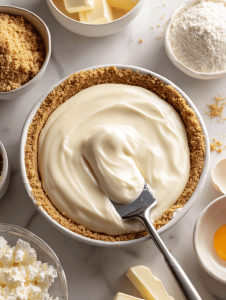
- Pour the filling over the cooled crust and smooth the top with a spatula. Bake for 50-55 minutes until the edges are set but the center still jiggles slightly.
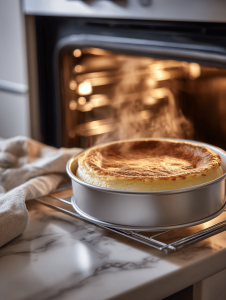
- Turn off the oven, crack the door open slightly, and let the cheesecake cool inside for one hour. This gradual cooling helps prevent cracks.
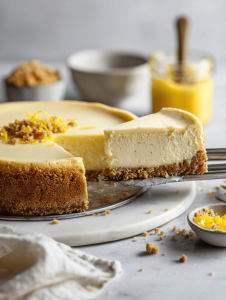
- Remove the cheesecake from the oven, transfer to a cooling rack, and refrigerate for at least 4 hours or overnight to set completely.
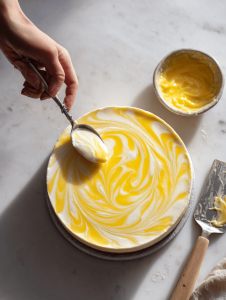
- Once chilled, spread the lemon curd in a circular pattern on the surface of the cheesecake. Use a rubber spatula or back of a spoon to create a web pattern by swirling outward from the center.
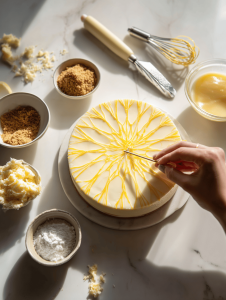
- Using a toothpick or skewer, gently drag lines from the center outward to form the web pattern, creating an intricate and decorative design.
- Slice and serve this visually stunning cheesecake, enjoying the creamy texture with the tangy lemon swirl on top. Perfect for impressing friends or indulging in a playful treat!
Leave a Reply